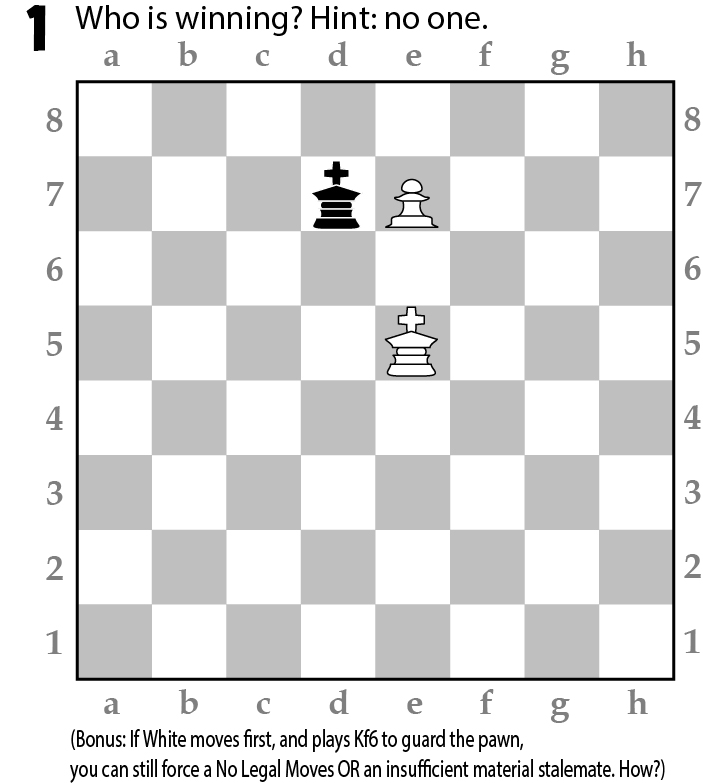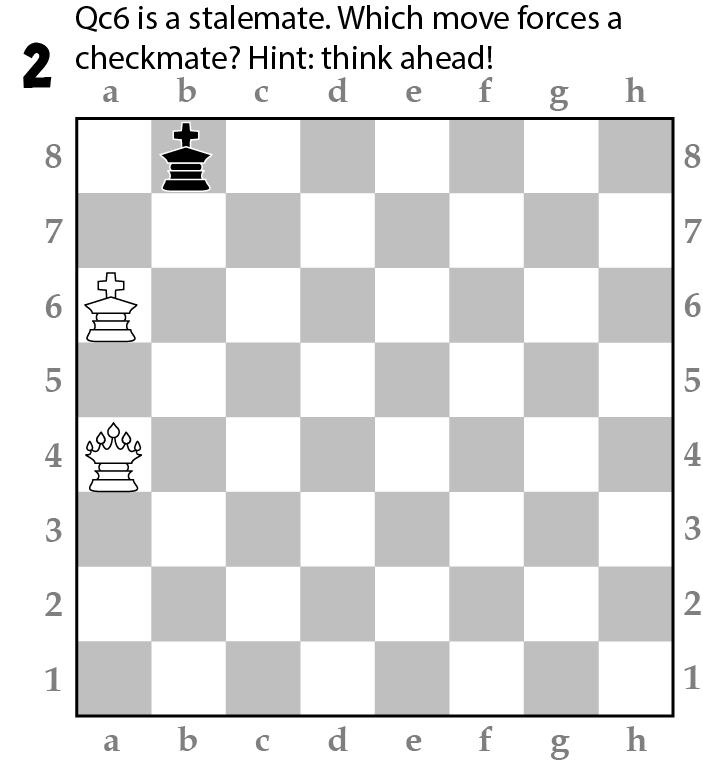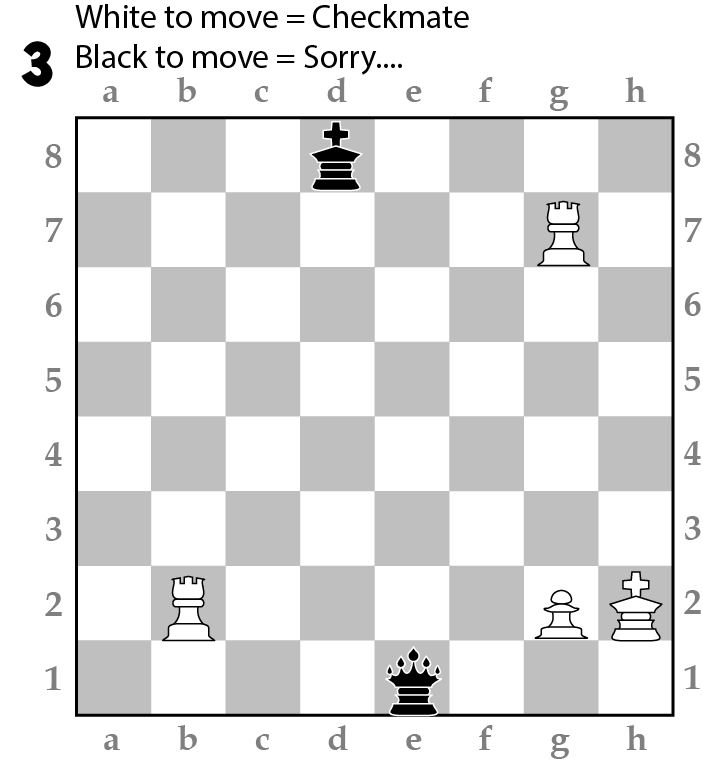A stalemate is a tie game. In a chess tournament, it is worth a half point, so it is a much more preferable outcome than a big fat zero when you lose.
Here’s how they work:

Who is winning this game? If you answered, “No one!” then you’ve already figured out this puzzle. If the players are both Chess Wizards (they are thinking about their moves and making the best decision they can) it doesn’t matter whose turn it is, but let’s say it is White’s turn. White Promotes to a Queen, and what does Black do? Capture it, of course. Can either team with just a King? No way! This is just one example of the Stalemate called Insufficient Material. You need to have enough firepower on the board to both check the King and at the same time make sure he has no way to escape.
The fewest pieces possible to do this are a King and a Rook. If you just have a King and a Bishop or Knight left – sorry, you’re out of luck. Feel free to try and prove me wrong, just don’t expect anyone to sit and wait for the 1 million years it will take you. I’ve heard it said that if you give a million chimps typewriters, mathematically over an infinite time spectrum, one of them will produce Hamlet by accident. I don’t necessarily agree with that, but in any case, nothing like that is going to happen here… you’re just not going to be able to do it. Call it a draw and move on with your day.

In this game, you happened to be playing a Wizard. It’s tough playing someone more skilled than you, but it’s a great way to learn, and you didn’t quit – I’m proud of you! But I did take all of your pieces. So here I am, it’s my move, and I’ve got a smug look on my face. I’m so happy, I’m not thinking right – which is why you never want to give up, because your opponent can still make mistakes, especially if they think they are winning! When I move my Queen to c6, I have a big smirk on my face.
You smile, as you watch my expression change from curiosity, to quizzical, to outright facepalm. You were hoping for this all along- I’ve created a stalemate! Your King is not in check, but does he have any place to move to? Are you allowed to, or would you, move your own King into danger? Well, if you think that’s a good idea, no one should let you drive until you’re at least 30 years old after some thorough professional instruction.

Who is winning this game? If you answered, “Whose move is it?” then you are really coming along as a Wizard in Training. This is because the player who moves first will determine the outcome of the game. How about this – if you are the White team, what is your best move? Hint: It’s a checkmate. Now what about for Black? What will you do, now that you are on the verge of extinction, like the dinosaurs or giant sloths? No, you should say to yourself, “Pft… asteroid smashteroid” and put the King in check on h4. The King escapes. Now… check him again. And he escapes. And check him again.
This might be repetitive, but it is keeping the asteroid from wiping out your species. Your opponent is annoyed with you, but what are you going to do, just let them win? They can’t checkmate you as long as they are escaping a check of their own. Do this 3 times in a row, and the rules of chess say it is a tie game. Because really, none of us want to keep checking you until the boogers in our nose are so big that they have formed asteroids of their own. Otherwise people would be bringing one of those indoor jungle gym things and a fridge full of corndogs to the games.
With elementary school kids learning chess, stalemates often occur when one player has an advantage at the end of the game, but can’t quite figure out to how to seal the deal. In this blog, I’ve shown you how stalemates happen, but the best way to avoid them – unless you’re playing for one, of course – is to practice your checkmates. But that’s another post, for another day.
Takeaway
Key Points
- Stalemate is a tie game. Also known as a Draw.
- 3 ways to stalemate: insufficient material (not enough firepower), no legal moves, and three-fold repetition. Well, there’s one more – 50 king moves with no other legal moves – but this almost never occurs outside of scholastic tournaments.
- If you’re winning, nothing is fun about stalemate.
- If you’re losing, fighting back to a draw is one of the best chess feelings there is.
